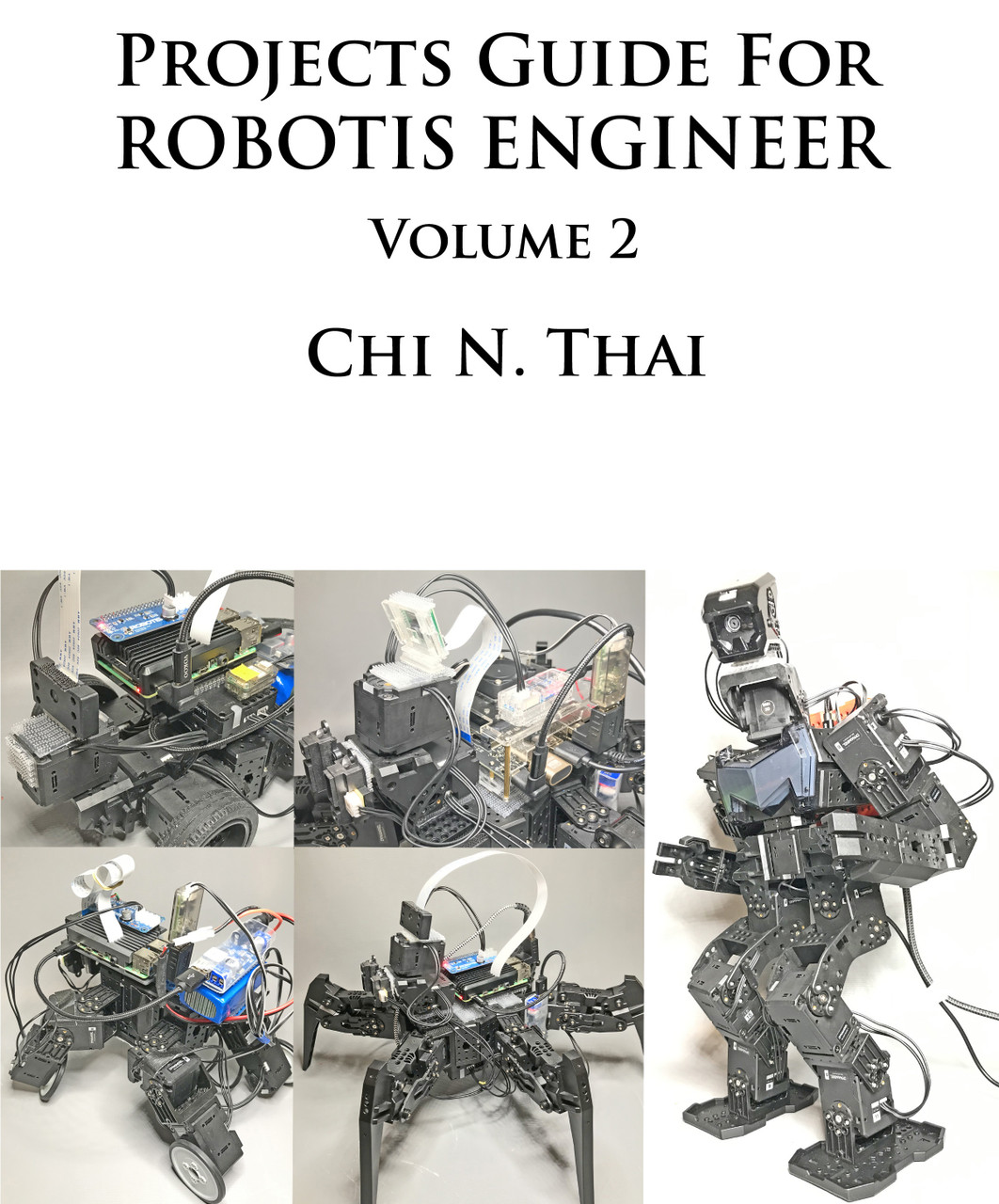Product Description
This book series (planned for 2 volumes) is written to help users to further utilize the capabilities of the ROBOTIS ENGINEER Kits 1 and 2. Each book chapter showcases one robot type, starting in Volume 1 with the “SimpleBot with Arms” and progressing towards more sophisticated robots in later chapters and into a future Volume 2. Furthermore, within each book chapter, the programming tool/environment used also progresses from “simple” like TASK/MOTION and MicroPython on the CM-550 to more “sophisticated” and “enabling” tools such as standard Python and C++ on a Desktop PC.
In a way, this book is “configurable”, whereas a user unfamiliar with C++ or Python can just stay with the TASK “path” from one chapter to the next, while a more experienced programmer would choose a C++ or Python “path” instead. Other users may choose or design their “personal” paths depending on their current skill levels and target goals. Another possible scenario is for/when teaching different levels of students while using the same physical robots (due to budget or time constraints perhaps), then the instructor can use TASK for beginning students in parallel with Python or C++ for more advanced students.
This series is designed for users with intermediate robotics and programming skills who have worked with ROBOTIS robotics systems before, such as PREMIUM, BIOLOID or MINI. Volume 1 assumes that the reader also has some experience in Python and C/C++ programming. The goals of Volume 1 are to establish the foundational robotics concepts and programming techniques for the ENGINEER System using three demonstration robots: 1) The “Simple Bot with Arms” (SBwA) is used to illustrate the basic operations of a purely jointed robot using DYNAMIXELs configured in Position Control. 2) The “Pan-Tilt Commando” (PTC) is used to illustrate the basic operations of a mixed-control robot that has some DYNAMIXELs configured in Position Control mode and some DYNAMIXELs configured in Velocity Control mode. 3) The “MonoBot” is used in conjunction with the PTC to explore the options in dual-robot control from a central PC using the ROBOTIS Remocon Packet Protocol. For each robot, multiple projects will be showcased first in TASK codes, then the same projects are re-coded in MicroPython so that readers can appreciate the “translation” requirements and subtleties. Programming features of the CM-550 will be combined with synergistic features from the ENGINEER Mobile App and the Raspberry Pi Zero-W with a Pi Camera. The same projects will also be reviewed and revised by adding the Standard Python and C/C++ features available at the Desktop PC levels, such as the OpenCV and Boost.Asio libraries, as well as the PySerial tool. These projects also showcase the “under-utilized” ROBOTIS Remocon Packet Protocol to control up to two robots simultaneously using ZigBee and Bluetooth communications hardware.
Volume 1 has 3 chapters:1. Chapter 1 provides a systemic view of the main features of the hardware and software systems for the ENGINEER kits: Hardware Controller CM-550; Actuators 2XL430-W250-T and XL430-W250-T; Raspberry Pi Zero W + Pi camera; Software tools - MANAGER V.2, TASK V.3, ENGINEER Mobile App; System view of ROBOTIS DYNAMIXEL Network. 2. Chapter 2 uses the “SimpleBot with Arms” (SBwA) platform to illustrate the new Actuator Position Control modes such as STEP, RECTANGULAR, TRAPEZOIDAL and TIMED, along with SyncWrite and Smart Device programming techniques. New Motion Play features such as Variable Motion Speed, Stop Pages and Joint Offsets programming techniques are also described. These concepts and techniques are demonstrated using TASK codes as well as the new MicroPython facility for the CM-550. Next, Standard Python and C/C++ applications developed at the Desktop/Laptop PC level are showcased to demonstrate the versatility of the ROBOTIS Remocon Packet Protocol in coordinating runtime events.





